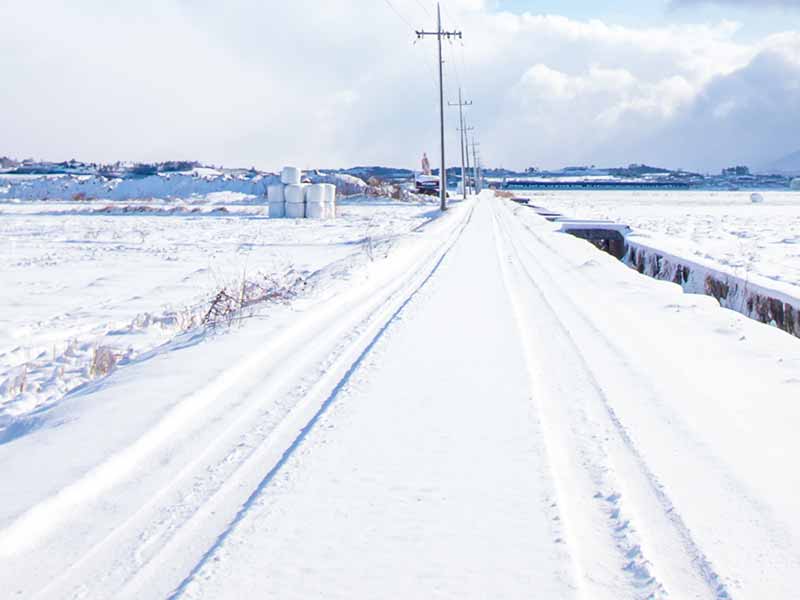Picture this: a serene winter landscape, snow gently falling, and you’re about to hit the road. But wait – what about your tires? Ensuring the right tire pressure in snowy conditions isn’t just about avoiding a flat; it’s about gaining that crucial traction to keep you safe and steady. This article is your go-to guide for navigating those frosty roads with confidence.
How Much To Air Down Tires For Snow
For on-road conditions, it’s recommended to maintain manufacturer’s tire pressure for safety and performance, as airing down may not provide more traction and can lead to underinflation issues.
Off-road, airing down 3-5 PSI can improve grip on snow, but always stay above the tire’s minimum pressure rating and adjust for vehicle weight and tire type.
In this article, we’ll delve into the nuances of airing down tires for snow. We’ll cover why it’s done, how much you should air down, and the key safety tips to keep in mind. Plus, we’ll bust some common myths to give you a clear picture of this winter driving technique.
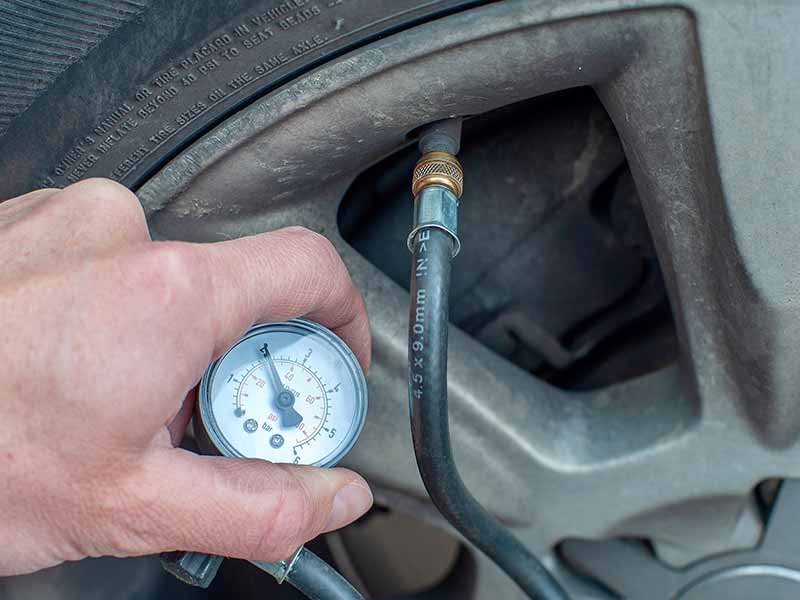
What Does Airing Down Mean?
Ever found yourself slipping and sliding around on snowy roads, despite having “all-season” tires? Well, sometimes, all-season doesn’t cut it when you’re up against Jack Frost’s best. That’s where airing down comes into the mix. Let’s dive into what it means and how it can be a game-changer for your winter driving.
Understanding Airing Down
Airing down simply means reducing the air pressure in your tires. It’s a trick off-roaders have used for ages to increase traction in challenging conditions, like sand, mud, and yes, snow. Here’s what happens:
- Increased Footprint: Lowering tire pressure allows more of your tire to make contact with the ground. Think of it as widening the base of your shoe for a slippery sidewalk.
- Enhanced Flexibility: Less air equals a softer tire that can adapt better to uneven surfaces, crucial for maintaining grip on unpredictable snow.
Why It Matters in Snow
When your tires are fully inflated, they’re great for normal driving conditions – offering a perfect balance between durability, fuel efficiency, and grip. However, when snow enters the picture, the rules change:
- More Traction: A larger tire surface area (thanks to less air) means more grip. This can make the difference between sliding and driving when roads get snowy.
- Softer Ride: Softer tires can absorb the irregularities of snow and ice better, leading to less bounce and more control.
Practical Insights
Now, before you start letting air out willy-nilly, consider this:
- Not Too Low: Going too low can damage the tire or the rim and make handling unpredictable. You’ll want to hit that sweet spot of lower pressure for snow without compromising safety.
- Check Regularly: Snow and cold can affect tire pressure. Check your pressure regularly, especially after dramatic temperature drops.
Related Reading
Interested in how this concept applies to other off-road adventures? Check out our detailed guide on Airing Down Tires for Off-Road Adventures. It’s packed with insights that apply to snow and a whole lot more.
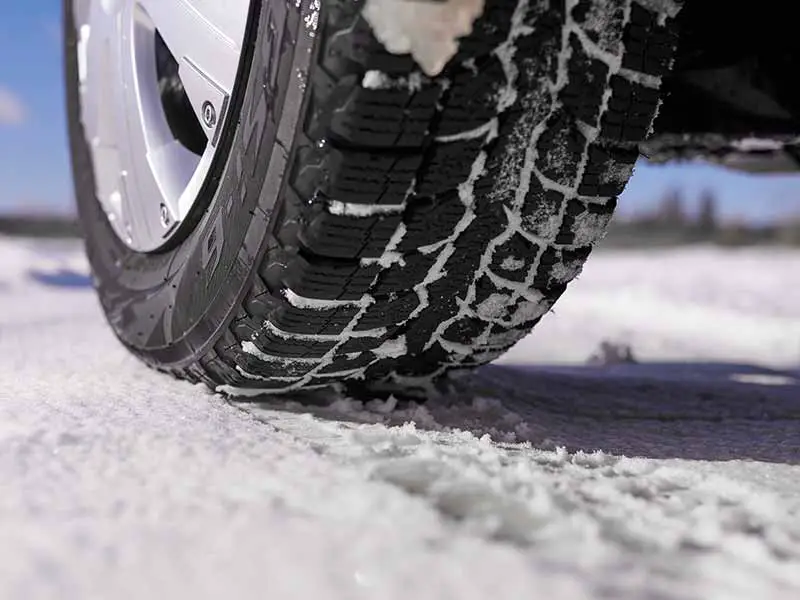
Benefits of Airing Down in Snow
When the world turns into a winter wonderland, it’s not just about building snowmen; it’s about staying safe on the roads. Airing down your tires can be a significant advantage in this chilly scenario. Let’s unpack the benefits of this simple yet effective practice.
Enhanced Traction: The Grip Factor
Getting a grip on snowy roads is paramount. Here’s how airing down helps:
- Wider Contact Patch: As you decrease tire pressure, the tire’s contact patch with the road widens. This wider footprint provides more traction, as more rubber meets the road.
- Better Bite: Softer tires can conform to the snow’s surface better, allowing the treads to bite into the snow and ice more effectively, leading to improved acceleration, braking, and cornering.
Improved Tire Flexibility: Bending Not Breaking
In frigid temperatures, everything stiffens, including your tires. Airing down allows your tires to remain flexible, even in the cold. This flexibility is crucial for:
- Adapting to Snow: Flexible tires can mold to the contours of snowy and icy surfaces, maintaining contact and traction.
- Reducing Bounce: Over-inflated tires can bounce on icy patches, losing contact with the road. A softer tire will absorb these irregularities, keeping you grounded.
Practical Application: Finding the Balance
While airing down offers clear benefits, it’s not a one-size-fits-all solution. Consider these practical tips:
- Right Amount: The optimal amount to air down will vary based on your vehicle, tire type, and the snow conditions. Generally, a reduction of 3-5 psi can make a notable difference without risking tire damage.
- Monitor Performance: Pay attention to how your vehicle handles. If you notice improved traction and control, you’re likely in the right range. If handling becomes sluggish or difficult, you may have gone too low.
Related Reading
Curious about how airing down compares in other soft terrains? Dive into our exploration of How to Air Down Tires for Sand for a comprehensive look at this technique’s benefits in different settings.

Craftsman Portable Air Compressor
How Much Should You Air Down?
Knowing you should air down for better traction in snow is one thing, but figuring out the right amount is where the rubber meets the snowy road. Let’s guide you through the specifics of how much to air down your tires for optimal snow traction.
General Guidelines for Passenger Cars and Trucks
When it comes to airing down, there’s no magic number that fits every vehicle or condition. However, here are some general guidelines to get you started:
- Passenger Cars: Typically, reducing tire pressure by about 3-5 psi below the recommended level can improve traction without compromising safety.
- Trucks and SUVs: These may benefit from a 5-10 psi reduction, especially if they’re carrying lighter loads or if the vehicle is heavier.
Factors Affecting How Much to Air Down
Several factors will influence the perfect pressure drop for your vehicle:
- Tire Size and Type: Larger, wider tires might need less air down than smaller, narrower ones. The type of tire (all-season, winter, off-road) also impacts how it responds to lower pressure.
- Vehicle Weight: Heavier vehicles may need a slighter reduction to avoid undue stress on the tires.
- Type of Snow: Light, fluffy snow might require less air down compared to wet, heavy snow or compacted ice.
Finding Your Vehicle’s Sweet Spot
It’s all about experimentation within safe limits. Here’s how to find your sweet spot:
- Start Gradual: Begin with a small reduction (around 3 psi) and test drive on a safe, snowy surface.
- Assess Handling: Pay attention to how your vehicle handles. Look for improved traction and control.
- Adjust as Necessary: If you feel confident, try reducing a bit more, but never drop below the tire manufacturer’s recommended minimum.
Related Reading
For insights into maintaining tire integrity while airing down, particularly for off-roading adventures, take a look at our guide on Airing Down Without Beadlocks. It’s crucial information for anyone looking to air down, regardless of the terrain.
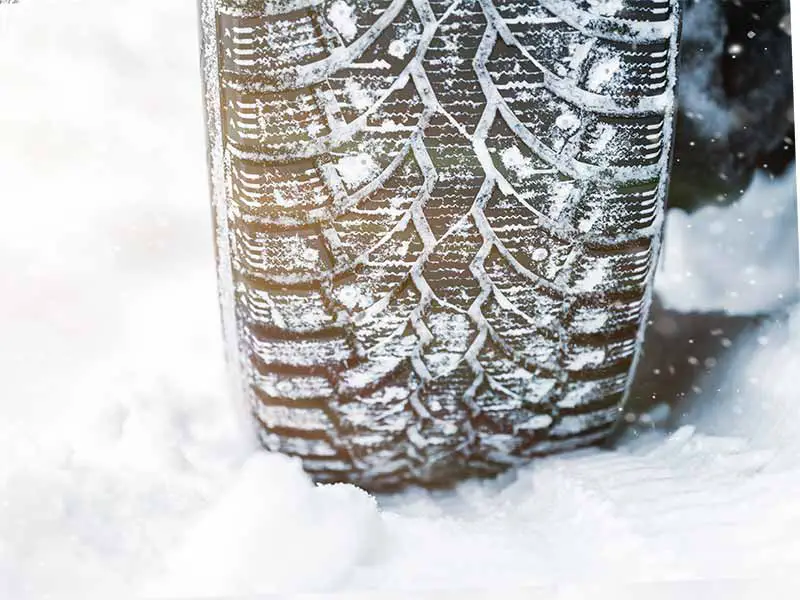
Step-by-Step Guide to Airing Down
Now that you understand the benefits and have an idea of how much to air down your tires for snowy conditions, let’s walk through the actual process. Airing down isn’t complicated, but it does require some care and attention to detail. Here’s your step-by-step guide to doing it right.
Equipment Needed
Before you start, make sure you have the right tools:
- Quality Air Gauge: Precision is key, so invest in a reliable tire pressure gauge.
- Portable Air Compressor: After you’re done driving in the snow, you’ll want to reinflate your tires to the proper pressure, so a portable compressor is a must-have.
Step-by-Step Airing Down
- Check Initial Pressure: Before altering anything, know your starting point. Check and record the current tire pressure on all tires.
- Deflate Slowly: Using your gauge, slowly release air from each tire. Pause frequently to check the pressure.
- Go Tire by Tire: Work on one tire at a time to ensure an even and controlled reduction across all tires.
- Test and Adjust: After initial deflation, test drive on a safe, snowy surface. Feel the traction and handling, then adjust if necessary.
- Recheck Often: Especially in cold weather, tire pressure can fluctuate. Recheck and adjust as needed throughout your snowy journey.
Safety Considerations and Tips
Airing down is generally safe when done correctly, but keep these points in mind:
- Never Go Below Minimum: Every tire has a minimum safe pressure. Never air down below this, as it risks tire damage and unsafe handling.
- Speed Matters: With lower tire pressure, high speeds can cause heat buildup and damage. Keep it slow and steady.
- Monitor Tires: Keep an eye on the condition of your tires, looking for any signs of distress or uneven wear.
Related Reading
If you’re interested in more off-road tire management tips, especially when and how to deflate tires for various conditions, don’t miss our article on When to Deflate Tires for Off-Roading.
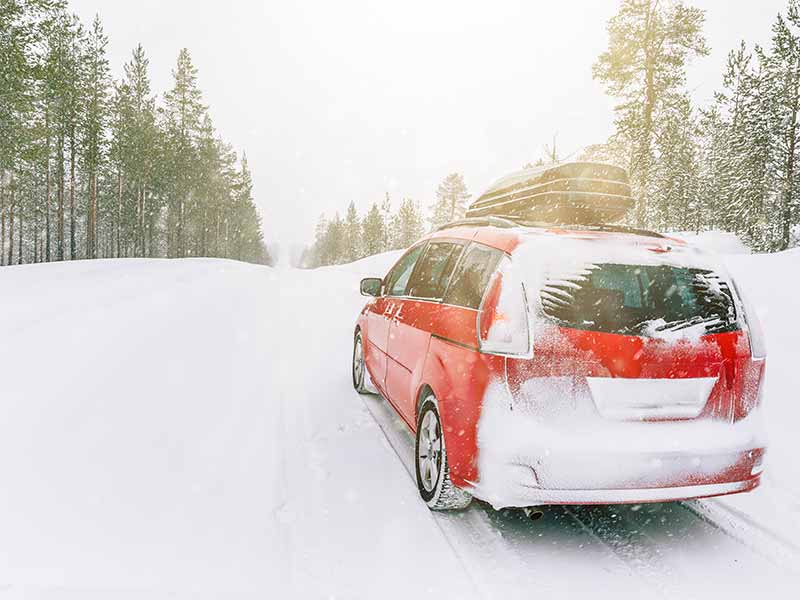
Myths vs. Facts About Airing Down
In the world of winter driving and tire management, there are plenty of myths floating around about airing down. It’s time to separate fact from fiction, ensuring you have the accurate information to make informed decisions. Let’s debunk some common myths and reinforce the truths about airing down tires for snow.
Myth 1: It’s Always Better to Air Down for Snow
- Fact: While airing down can improve traction in snow, it’s not a universal solution. The effectiveness can vary depending on the type of snow, vehicle, and tire. It’s about finding the right balance for your specific situation.
Myth 2: Airing Down Causes Tire Damage
- Fact: Airing down within safe limits does not inherently damage tires. However, going too low or driving on deflated tires at high speeds or for long distances can indeed cause tire or rim damage. Always stay above the tire’s minimum pressure rating.
Myth 3: The Lower the Pressure, the Better the Traction
- Fact: There’s a sweet spot for traction improvement. While lowering pressure increases the tire’s footprint and can enhance grip, dropping the pressure too much can lead to poor handling, increased tire wear, and even tire failure. Balance is key.
Myth 4: Airing Down Is Only for Off-Road Vehicles
- Fact: Airing down is a technique widely used in off-roading for increased traction. However, it’s also beneficial for regular passenger vehicles driving on snow-covered roads, as it can provide better traction and control.
Myth 5: Once Aired Down, Tires Don’t Need to Be Monitored
- Fact: Tires that have been aired down require more frequent monitoring. Snowy and cold conditions can affect tire pressure, and what was perfect one day might not be the next. Regularly check and adjust as necessary.
Practical Advice
Understanding the myths and facts about airing down helps you make safer and more effective decisions. Here are a few practical takeaways:
- Consult Your Manual: Your vehicle and tire manuals can provide valuable information on safe tire pressure ranges.
- Be Observant: Pay attention to how your vehicle handles with different tire pressures and adjust accordingly.
- Seek Professional Advice: If you’re unsure about airing down or how it affects your specific vehicle and tires, consult a professional.
Resources
Below are some links you may find helpful when learning about tires:
- Should you lower tire pressure to gain traction in snow – Consumer Reports
- How to deal with ice and snow – Connecticut DOT
Final Thoughts
Navigating snowy roads safely hinges on understanding and managing your tire pressure. While airing down can enhance traction by increasing the tire’s contact with the road, it’s crucial not to overdo it, as excessive deflation can lead to underinflated tires and impact steering.
Regular checks and adjustments are vital due to the impact of cold weather on tire pressure. Ultimately, the best practice is to adhere to the manufacturer’s recommended tire pressure levels, adjusting slightly for winter conditions when necessary.
Good luck and happy motoring.
